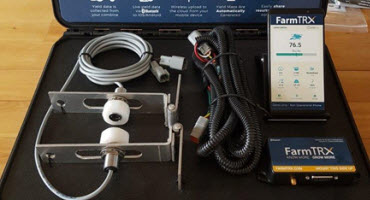Growers need to increase their profitability on every single acre they grow
Bennie Dunhin, Agronomy Manager with Cavalier Agrow says that the more he thought about the problem, the more he wanted to fundamentally change to how he was going to approach plant nutrition. Bennie spoke recently during the 2018 Farms.com Western Precision Agriculture Conference and Ag Technology Showcase in Saskatoon earlier in November.
“Yield data is the Y axis of everything we’re trying to address: P, K, S, N, and Micros,” Dunhin explained, “We have to be able to discover the yield driver of every field by correlating yield with soil attributes”
Dunhin says that he came to realize that for data collection to be embraced by farmers, it needed to be captured automatically. Dunhin also noted that growers had data fatigue due to the difficulty involved with data capture.
He wanted growers to be able to measure the work they do, and the recommendations they receive from their agronomists. “Growers need to increase their profitability on every single acre they grow.”
Dunhin is an agronomist by training. He believed that cloud mapping software could be used to automate yield data cleansing, and he began working with a company called Troo, and their retrofit yield monitor system called FarmTRX. This yield measuring device fits on any color or model combine and captures yield data automatically.
Troo specializes in collecting mobile location & sensor data and delivering it to its users in a meaningful way – they are proud to work with Canadian-based suppliers. Troo does not work exclusively in agriculture, but its expertise working with groups to process precision data in a way that brings value to the information was helpful in developing FarmTRX.

Here is how the FarmTRX system works:
- Optical sensors read height of grain on each paddle in the clean grain elevator and store this information on the yield monitor
- Mobile app connects to the monitor via Bluetooth and is used to setup the device
- Realtime harvest data is wirelessly transmitted to app for in-cab display
- Data is transferred to cloud by the app using cell connection or wifi
- FarmTRX Cloud automatically cleans yield data, intelligently correcting for user errors and multi-combine calibration issues, and generates yield maps and reports
Dunhin says he believes that he can now provide high precision yield maps to his farmers at an affordable price; and is pleased to see the value of precision agriculture truly starting to emerge. “The future is prescription-based agriculture and if we cannot measure what we do, how will we know if we are doing the right thing. “
Farms.com holds two precision agriculture conferences each year. One in western Canada and one in Ontario. To learn more about the 2019 Farms.com Precision Agriculture Conference and Ag Technology Showcase in London, Ontario, visit https://www.farms.com/precision-agriculture/eastern-conference-2019/.